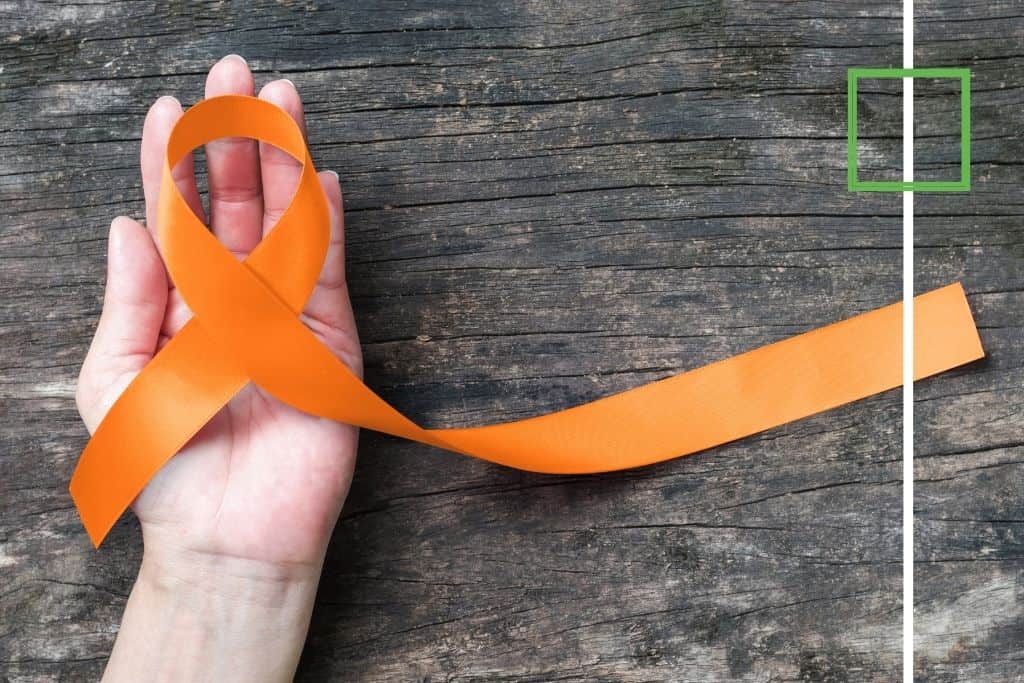Self Harm Awareness Day is a global event held annually on March 1. Its purpose is to remove the stigma attached to self-injury and to encourage parents, family members, educators, and healthcare professionals to recognize and respond to the signs of self-harm.
What Is Self-Harm Awareness Month?
March is recognized as the National Self Harm Awareness Month, a month dedicated to bringing awareness to something that happens across all genders, races, beliefs, and ages. One in five individuals will engage in self-injury in their lifetime, with the vast majority beginning during adolescence. [1]
Self-harm, also known as self-mutilation, is an act of someone hurting themselves intentionally. If you are feeling intense emotional pain, have experienced trauma, or suffer from a mental health condition, you are more likely to self-harm. And for some, it is a shout for help. Self-mutilating behavior is often mistakenly diagnosed as attempts of suicide, but most people who self-harm are not attempting suicide. However, self-harm can cause more damage to someone’s health and safety, even causing accidental suicide.
What Causes Self-Harm?
There are different reasons why people harm themselves. Often, they have trouble coping and dealing with their feelings. [2] They harm themselves to try to:
- Make themselves feel something, when they feel empty or numb inside
- Block upsetting memories
- Show that they need help
- Release strong feelings that overwhelm them, such as anger, loneliness, or hopelessness
- Punish themselves
- Feel a sense of control


Get Your Life Back
Find Hope & Recovery. Get Safe Comfortable Detox, Addiction Rehab & Dual Diagnosis High-Quality Care.
Hotline(844) 597-1011Top Warning Signs Of Self-Harm
On Self Harm Awareness Day, learn the top signs and symptoms of someone suffering from self-mutilating behavior. Someone may be self-harming to cope with upsetting feelings and thoughts. Someone may feel like self-harm relieves their feelings of guilt or shame. However, feeling relieved after self-harming is only short-term, and can result in a desire to self-harm again.
A person who experiences a mental health condition is at a higher risk of self-harm. Some cases suggest depression can be a precursor to self-harm as well. People suffering from personality disorders may also be more likely to self-harm. In the same way, eating disorders such as anorexia and bulimia increase the chances that someone will do self-harm.
Self-harm Behaviors and Signs
- Cutting, burning, or hitting yourself
- Drug addiction or alcoholism
- Overdosing on prescription medications
- Binge eating or starvation
- Putting oneself in a risky situation
- You may also self-harm because of the sudden death of a loved one, experience pain such as bullying, miscarriage, or any experience that brings you extreme sadness or anger.
Behavioral Signs:
- Avoiding activities that expose the body
- Interacting less or performing duties less well at home, school, or work
- Having unexplained wounds or unlikely justifications for injuries
- Hiding dangerous objects, like razor blades
Psychological Signs:
- Expressing feelings of depression
- Expressing feelings of anxiety
Psychosocial Signs:
- Lack of interest in hobbies that you once enjoyed
- Disengaging from social interactions
- Having difficulties communicating with loved ones
- Drastic mood swings
Physical Signs:
- Overdosing on medicine and requiring medical attention
- Physical signs of self-harm on the body like open wounds or cuts
When Is Self Harm Awareness Month
March 1 of each year is Self Harm Awareness Day, which leads into Self-Injury Awareness Month. The day and month serve to draw attention to the struggles of those affected by this condition.
Self Harm Awareness Day is a global awareness event celebrated on March 1. It draws attention to self-harm in the hope of helping people who practice it. Almost two million Americans engage in self-harm. About 17% of people will self-harm during their lifetime. People who self-harm say that it gives them a feeling of control and release from tension.
On Self Harm Awareness Day, people can share their self-harm stories, which can help them find a community of people who understand and can help them overcome it. Mental health organizations also make extra efforts to raise awareness about self-harm and self-injury, with some even offering free therapy sessions on the day. [3]
Self-injury Awareness Day (SIAD) (also known as Self Harm Awareness Day is a grassroots annual global awareness event/campaign on March 1, where on this day, and in the weeks leading up to it and after, some people choose to be more open about their own self-harm, and awareness organizations make special efforts to raise awareness about self-harm and self-injury.
Some people wear an orange awareness ribbon (self-harm awareness color), write “LOVE” on their arms, draw a butterfly on their wrists in awareness of “the Butterfly Project” wristband or beaded bracelet to encourage awareness of self-harm.
Self Harm Awareness Color

Get Help. Get Better. Get Your Life Back.
Searching for Accredited Drug and Alcohol Rehab Centers Near You?
Even if you have failed previously and relapsed, or are in the middle of a difficult crisis, we stand ready to support you. Our trusted behavioral health specialists will not give up on you. When you feel ready or just want someone to speak to about therapy alternatives to change your life call us. Even if we cannot assist you, we will lead you to wherever you can get support. There is no obligation. Call our hotline today.
(844) 597-1011History Of Self Harm Awareness Day
The origin and history of Self Harm Awareness Day are unknown. People wear an orange ribbon, a butterfly on their wrists, or a beaded bracelet to encourage awareness of self-harm. The orange ribbon represents hope for a misread problem. The idea is to eradicate the common clichés surrounding self-harm and to educate medical professionals about it.
Self-harm begins with an express purpose to harm oneself. Self-injury includes skin carving, self-medicating, and abnormal scratching. Burning oneself, and punching or hitting walls to create pain are also methods. Other examples are drinking poisonous chemicals, radical skin picking, pulling hair, and purposely interfering with wound healing. Warning signs include isolation; avoiding social interactions, and baggy clothing to hide wounds. Further signs are finding sharp instruments such as razors in strange places, constant excuses for cuts on arms, stomach, and legs, and locking themselves into the bathroom or bedroom for long periods of time.
Teens are by far the highest statistic for self-harm injury, as studies show that about 15% of teens and 17-35% of students have practiced self-harm. People who engage in self-harm activities often are three-and-a-half times more likely to try suicide. Depression and self-harm mostly go hand-in-hand. It must however be stated that there are many other reasons people self-harm. The vicious cycle recurs because, after the self-injurious act, the individual will be inclined to feel shame or guilt. This results in significant anguish, leading them to self-injure once again. It is a spiral of shame and guilt, followed by relief and emotional release. Self Harm Awareness Day aims to get rid of this guilt and break the cycle. [4]
Speak To A Professional
Diagnosis for self-harm is based on a physical and psychological evaluation. Someone may be referred to a mental health professional with practice in treating self-injury for evaluation. A mental health professional will also evaluate a client for other mental health disorders that may be linked to self-injury, such as depression or personality disorders.
There are different approaches to managing self-harm, similar to mental illness. They include the following:
Cognitive Behavioral Therapy — This is a type of ‘talking therapy’ and it usually involves efforts to change a patient’s thinking patterns. CBT therapy may include learning to recognize one’s distortions in thinking that are creating problems, and then reevaluating them considering reality.

Medication — In some cases, the effective treatment for an underlying condition that triggers self-harm is medicine, such as an antidepressant or anxiety medicine. A client’s psychologist may recommend treatment, but only a doctor or a psychiatrist can prescribe medicines.
Psychotherapy — Counselling helps to stabilize feelings and thoughts by identifying the cause of the emotional stress and then it will teach skills to help address distress.
Anyone may need treatment from a doctor for serious physical injuries after a self-harm episode. In severe cases, a victim may be required to go to the emergency department.
First-class Facilities & Amenities
World-class High-Quality Addiction & Mental Health Rehabilitation Treatment
Rehab Centers TourRenowned Addiction Centers. Serene Private Facilities. Inpatient rehab programs vary.
Addiction Helpline(844) 597-1011Proven recovery success experience, backed by a Team w/ History of:
15+
Years of Unified Experience
100s
5-Star Reviews Across Our Centers
10K
Recovery Success Stories Across Our Network
- Low Patient to Therapist Ratio
- Onsite Medical Detox Center
- Comprehensive Dual-Diagnosis Treatment
- Complimentary Family & Alumni Programs
- Coaching, Recovery & Personal Development Events
Dual Diagnosis Treatment
If someone does self-harm often they can possibly become suicidal or feel confined to a cycle of hopelessness, as self-harm is not a helpful way to deal with distressing emotions. Other major complications of self-harm include long-term scarring, infection, brain injury as well as organ damage.
There are people of all ages who harm themselves, but it usually starts in the teen or early adult years. Self-harm is more common in people who:
- Were abused or went through a trauma as children
- Have mental disorders, such as
- Depression
- Eating disorders
- Post-traumatic stress disorder
- Certain personality disorders
- Misuse drugs or alcohol
- Have friends who self-harm
- Have low self-esteem
Self Harm And Addiction Issues
It is extremely important to speak with a counselor, psychiatrist, or doctor if someone does self-harm. These healthcare professionals can help someone in need find what is causing them to self-harm and work through their thoughts. Early intervention can also minimize damage caused by self-harm and decrease the risk of future episodes. Victims of self-harm may also find supportive people with who they feel comfortable, who they can talk to, and who will listen to them without judgment.
If you think someone you care for is engaging in self-harm, it is important that you offer them support. Encourage them to get professional help and continue checking in with them to see how they are going.
If you have struggled with self-harm or if you want to provide support to those who are struggling, bringing awareness to the issue is critical. Many times we don’t even know that someone we care about is hurting emotionally and physically. They may hide their injuries with clothing and make-up or even isolate themselves.
Bringing awareness to the issue in a non-judgmental and supporting manner may create a platform for more people to open up about their experiences and inspire others to get help. The orange ribbon is a symbol of Self Harm Awareness Day. Pin an orange ribbon to your shirt or purse throughout March, and any day of the year to symbolize Self Harm Awareness. It may spark a conversation where the community can educate others on the subject or it can serve as a signal that the community can provide a safe space for individuals who do self-harm and need someone to talk to.
It is estimated that over 8% of people who follow through with self-harm also abuse drugs, but some consider self-harm a form of addiction in itself. Similar to some forms of substance abuse, self-harm is often used as a response to feelings of sadness or depression. By causing an injury, a cut or burn could produce feelings of relief and even a rush of pain-relieving endorphins, however, this immediate relief will likely be followed by feelings of shame and guilt.
The highs and lows associated with self-harm lend themselves to a cycle of negative feelings, self-injury, relief, and more negative feelings. The obsession to cut or use other methods of self-harm is not much different than the use of drugs. On the flip side, the use of drugs or alcohol can be considered a form of self-harm too.

World-class, Accredited, 5-Star Reviewed, Effective Addiction & Mental Health Programs. Complete Behavioral Health Inpatient Rehab, Detox plus Co-occuring Disorders Therapy.
CALL(844) 597-1011End the Addiction Pain. End the Emotional Rollercoaster. Get Your Life Back. Start Drug, Alcohol & Dual Diagnosis Mental Health Treatment Now. Get Free No-obligation Guidance by Substance Abuse Specialists Who Understand Addiction & Mental Health Recovery & Know How to Help.
Bringing Awareness To Self Harm
Self-harm and substance abuse are often intertwined. Individuals that have had traumatic life events like abuse, neglect, and trauma pose a greater risk of self-harm along with substance abuse. Being influenced by substances often lead to self-injury as well.
Treatment can be much more complex when self-mutilating behavior is combined with addiction. Many who suffer from both behaviors need advanced care that simultaneously tackles both issues. Dual diagnosis treatment grasps the various constraints that lead individuals to self-harm, this will help them discover the problems and cope more healthily.
Individuals who physically self-harm and abuse drugs or alcohol may be given a dual mental health diagnosis. We Level Up dual diagnosis program is designed to assist those who struggle with a substance use disorder along with other mental health issues. We Level Up providers can work with clients to address underlying struggles and set clients on track for a healthier and happier future.
We Level Up trained experts strive to stay on top of the latest alternative treatments, and will give clients the proper help to resolve self-harming habits successfully. Self Harm Awareness Day is so important, but it’s only one day. We Level Up supports the individuals they serve throughout the year and work to reduce the stigma associated with self-injury. Looking for Immediate Help? Speak with an Addiction Advisor by contacting We Level Up.
Experience Transformative Recovery at We Level Up Treatment Centers.
See our authentic success stories. Get inspired. Get the help you deserve.
Start a New Life
Begin with a free call to an addiction & behavioral health treatment advisor. Learn more about our dual-diagnosis programs. The We Level Up Treatment Center Network delivers recovery programs that vary by each treatment facility. Call to learn more.
- Personalized Care
- Caring Accountable Staff
- World-class Amenities
- Licensed & Accredited
- Renowned w/ 100s 5-Star Reviews
We’ll Call You
Sources:
[1,3] Self Harm Awareness: Self-Injury & Addiction – Level Up Lake Worth
[2] Self-Harm – U.S. Department of Health and Human Services National Institutes of Health
[4] Self-Injury Awareness Day – March 1, 2022 – https://nationaltoday.com/self-injury-awareness-day/


